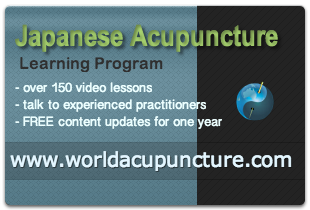Japanese Acupuncture diagnostic protocols can be incredibly effective in assisting to fine tune treatments to suit the individual patient and their current condition.
There is no question in my mind that the most vital aspect of effective Traditional Japanese Acupuncture treatment is what we know it has the root treatment, the fundamental driver of successful treatment outcomes.
I recently experienced a classic demonstration of the importance of the correct root treatment when working with one of the elite Australian Rules football players that I regularly treat in my Brisbane clinic.

Roger had injured his ankle and had been undergoing treatment (physiotherapy and Traditional Japanese Acupuncture) for this injury.
The medical hierarchy of the club decided that it was in his best interests to receive a local cortisone injection to reduce some residual inflammation in a troublesome Achilles tendon whilst he was incapacitated with his ankle injury.
After the cortisone injection Roger experienced an extremely restless night’s sleep, night sweats, sore throat and severe malaise the following morning.
Influenced by the current flu conscious environment I erred in my diagnosis, incorrectly concluding that Roger’s fundamental deficiency lay in the Spleen meridian and proceeded to administer a Spleen deficiency root treatment (Pe 7 – Sp3) throughout the following week.
The Spleen meridian plays an important role in boosting the immune system and I was extremely concerned that his internal defense mechanisms were performing at an optimal level.
After three treatments there was precious little improvement in his condition and it became obvious to me that I was barking up the wrong tree.
As a result I put aside all my preconceptions, wiped the slate clean and went through the diagnostic process thoroughly and without prejudice.
In a classic dah moment I realized that I had misdiagnosed his condition and rather than Spleen deficiency the fundamental imbalance lay the Kidney meridian.
In hindsight it was quite obvious that rather than suffering from flu or as we know in Traditional Acupuncture an exogenous pathogenic invasion, he was suffering from cortisone induced kidney deficiency.
One of the unique qualities of the diagnostic paradigms of Traditional Japanese Acupuncture is the ability to logically navigate our way between root treatments when confronted by unsuccessful clinical outcomes.
Roger responded immediately to Kidney root treatment (Lu 5 – Ki7), letting us know at the end of the session that he felt much better already.
Two days later and he reported that all the symptoms had improved out of sight and he was once again full of beans and raring to go.
There was still much work to be done on his injured ankle but he was able to fully embrace all aspects of a non-weight-bearing training regime in an effort to maintain his base fitness levels.
The bottom line is that regardless of my inadequacies as a clinician by using the guidelines provided by Traditional Japanese Acupuncture I was eventually able to achieve a successful clinical outcome for Roger, detect and correct my misdiagnosis, expand my understanding and clinical expertise.
I am, you might say, wiser for the experience and extremely grateful that I was able to utilize the logical diagnostic protocols of Traditional Japanese Acupuncture to expand my capacity to deliver the goods in clinic.
All the best,
Alan
Alan Jansson is an internationally recognized teacher and practitioner of Traditional Japanese Acupuncture. For well over a decade, independent of and in conjunction with Masakazu Ikeda sensei and Edward Obaidey, Alan has presented, convened and hosted in the vicinity of 30 Traditional Japanese Acupuncture workshops in Australia, New Zealand and USA. Driven by a strong desire to promote the consumer friendly nature, clinical efficacy and potency of Meridian Based Traditional Japanese Acupuncture, Alan is a staunch advocate of practically based workshops and draws upon his 25 years clinical experience and 14 years post and undergraduate teaching in a concerted effort to lift the bar globally in the clinical application of this most amazing medical art.
Join him in Exploring the Art of Acupuncture in the 21st century at http://www.Worldacupunctureblog.com
For more info, please visit: http://www.Worldacupuncture.com

nice post Al…I am sure many practitioners will be comforted by your experience
Thanks Adam, appreciate your feedback muchly